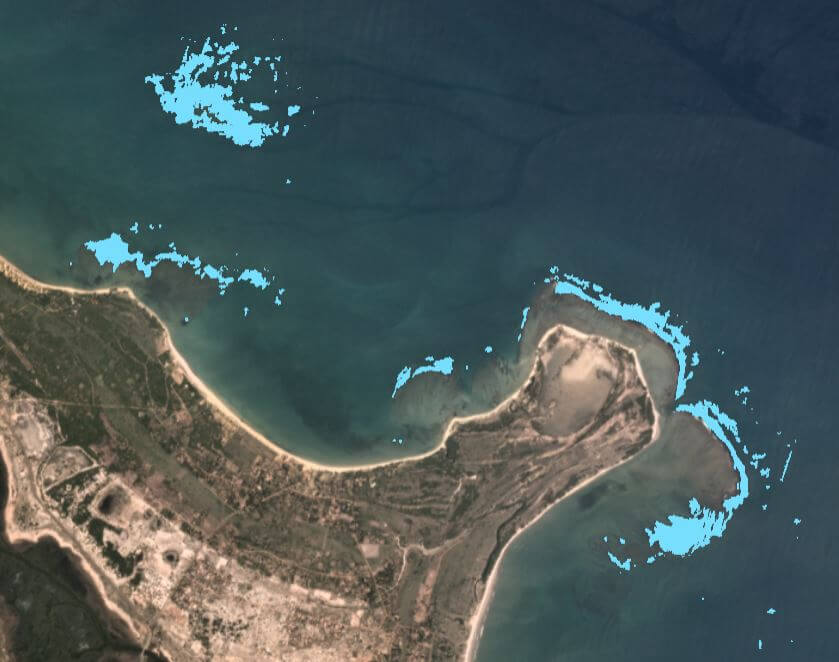SL003 – Sri Lanka – GIS habitat mapping prediction – Overview
SL003 – Sri Lanka – GIS habitat mapping prediction
Overview
A recent project from our Sri Lankan partner provided extensive ground truthing data over ~40km2 of the Kayankerni reef in eastern Sri Lanka which was used to classify underwater habitats for this area. The objective of the present project would be to leverage those data to assess the potential to extend the GIS model prediction to other areas further away, with the ideal objective of being able to validate those data for the mapping of all shallow coral reefs and coral bleaching.
Climate, geography and ecosystems
The project is based in Kalkudah, a small fishing village located near the popular resort beach of Pasikudah, in the eastern dry zone of Sri Lanka. The climate is hot and dry, with a wet season from December to February.
The landscape is flat, comprising of scrub forests, dry tropical forests, agricultural lands and coastal wetlands, with isolated rocky hillocks further inland. The coastline consists of sandy beaches, lagoons, estuaries and coral reefs. The Maduru Oya river system drains into the ocean via the Valachchenai estuary which contains extensive mangrove habitats and seagrass communities. Fringing coral reefs and rocky reefs are found along the coast, with significant reef systems around Kayankerni, Pasikudah and Punnakuda. Kayankerni reef remains of the healthiest coral reef systems in Sri Lanka, with minimal impacts from the 2016 coral bleaching event.
Blue Resources Trust is currently supporting initiatives by the Sri Lankan Department of Wildlife Conservation to declare the reef as a marine sanctuary. There are also several shipwrecks in the area including the SS British Sergeant, sunk by Japanese planes in WWII.
Geography

Dry season
March through to October
Rainy season
November through to February
Rainy weather resulting from the North East monsoon.
This project is mostly land-based and can be run year-long.
Ecosystems
Estuary
Grassland and scrub forest
Sandy beaches
Mangroves
Seagrass beds
Coral reefs
Key focus organisms
The east coast of Sri Lanka is rich in marine biodiversity. Fringing coral reefs along the east coast are known to contain more than 100 species of hard corals and over 200 species of reef fish. However, due to the lack of many detailed biodiversity assessments these numbers are likely to be heavily underestimated.
Reefs in the area are home to several threatened species and species with restricted distribution. These include the hard corals species Echinopora robusta and Porites desilverii and several reef fish such as the Humphead wrasse (Cheilinus undulates), and the Sri Lanka humphead parrotfish (Chlorurus rhakoura). Four species of seagrass are found within Valachchenai lagoon including the only known record of Halodule pinifolia from the east coast of Sri Lanka. Our partner, Blue Resources Trust, currently has research programs focusing on coral reefs, seagrass habitats and elasmobranchs.